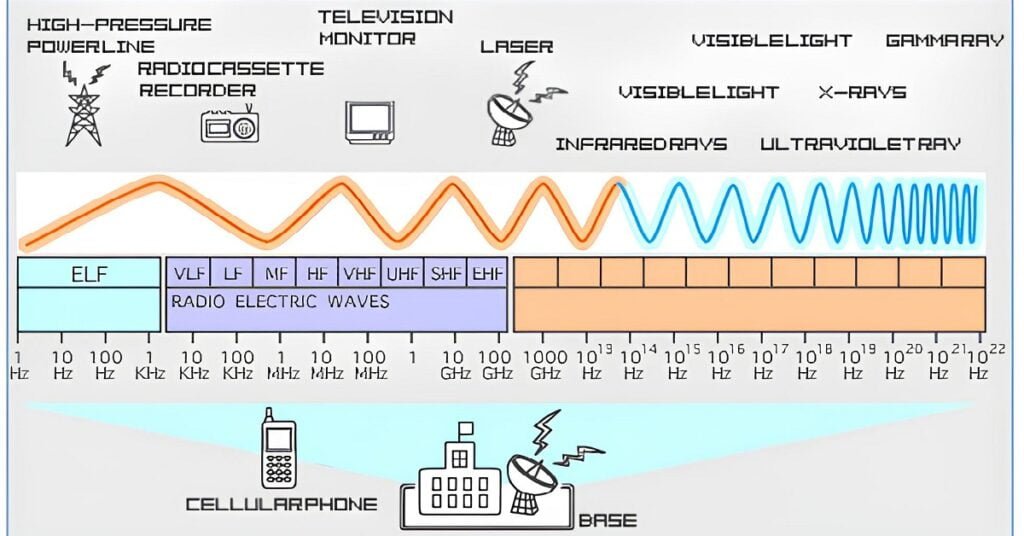Table of Contents
ToggleRadio Frequency and Waves: the Code of RF And Radio Waves
Undoubtedly — but I bet you have, too, especially if you are like me and often find yourself just staring at your ham radio station in wonder. What exactly are these invisible waves that carry my voice across the street!? Or half-way around the globe! Looks like radio people now also have a surprise. Let’s demystify the vast and sometimes confusing planet of Radio Frequency (RF) and radio waves today! Trust me, you will not only understand these at the end of this but also will be able to impress your peer groups with your new arsenal.
What Is Radio Frequency (RF)?

RF or radio frequency is used to identify and describe electromagnetic waves in the radio spectrum. This range of frequency dictates how those waves propagate and are enclosed. Sounds classy, right? Launched in simple terms, it is what makes your walkie-talkies, ham radios and yes even the Bluetooth speaker on your car work without having spread along a length of twined connection.
Radio frequency (RF) is the highway of wireless radio communication. But, just like how you can have faster or slower lanes on a highway, different frequencies of RF are used for different types of communication. Emergency signals to popular FM stations each have their own frequency lane, which everyone can use without interference. (Just think if you took to your walkie-talkie and chimed in the middle of the last ham radio review—final hour stuff!)
But, before you grab the wheel (or, in this particular case, the air), you need to know how radio waves function and how they carry all that information.
Unsung heroes of communication – Radio Waves
Ah, radio waves. The Unsung Heroes of the EM Spectrum They may not be as exciting to talk about as say, X-rays or gamma rays, but without them, walkie-talkies would be useless.
So what are radio waves? One of the main reasons that radio waves are used so much is, due to their low frequency and resultant long wavelength they are relatively easy to receive. And since their wavelength is longer they are far less energetic than higher-frequency waves. These are not the X-rays that your doctor uses to see inside your bones, but they are perfect for transmitting data around the world in a secure manner.
In addition to a frequency and band allocated for the micro or millimeter wave communication, radio waves are set by wavelength (typically greater than one millimeter) or remote frequencies (permitted starting from three hundred GHz down to nine kHz). In simple terms, it is because they have a longer wavelength and slower timing that let them go through some distance without getting scattered. All things are possible with radio waves, from your favorite FM radio station to the upcoming ham radio review.
And, it gets even cooler (or geekier depending upon your point of view): Radio waves have an electromagnetic spectrum from about 3 kilohertz (KHz) up to 300 gigahertz (GHz). Specific frequency bands within this spectrum are reserved for specific applications, such as land mobiles, radios, cell phones. These bands are coordinated internationally by the International Telecommunication Union (ITU) to ensure that everyone stays on target and in line, as well as minimizing interference. A sort of radio global traffic cop maintaining order on the world’s frequencies.
Birth of the Radio Wave: From Spark to Airwaves

Then how the creation of these waves that are not visible with our naked eye. Note the transmitter, a nifty little device that makes an electrical signal. It all starts from here. Then it converts that signal to electromagnetic waves and then transmits them into the air with an antenna. Out there, these waves travel at the speed of light (which is pretty fast) all the way until they hit an antenna receiver. Once the waves make it to the receiver, which changes them back into an electrical signal that can be used for sound or data or another installment of your favorite ham radio show.
Let’s put that into a real example. When we switch to the walkie talkie PTT button, the transmitter within the walkie-talkie may convert our voice to radio waves. The electromagnetic wave is then sent into the atmosphere and it spreads among the air to reach remote receivers wherever our hardware can be installed. A little ways off, your friend hears and catches that wave with his walkie talkie with its antenna, converts it back into sound and voilà! Basically you are talking without a phone or a huge reel of cable.
Radio transmission is nice because it’s right now, even thousands of miles can have zero lag. Looks like magic, but more science and less bunnies.
How Fast is FAST? — A Radio Frequency Decrypt
RF is measured by the number of cycles in a wave completed over one second. This unit is called hertz (Hz) and measures the cycles per second. A hertz is a cycle per second. But think about a wave and how it goes up and down like a roller coaster, with each full loop being one cycle.
Radio waves are so interesting. They are also so fast. Radio waves can travel at thousands to billions of cycles per second. According to radio frequency and wavelength rules, if we increase the radio frequency, wavelength decreases and if we decrease the radio frequency, radio wavelength increases. A one MHz wave (meaning it cycles one million times a second) has a wavelength of around 300 meters, enabling it to travel over longer distances at its lower frequency. In contrast, the FM radio station is using a 100-MHz wave (which has only a 3-meter wavelength and therefore travels stupid short distances). The fact that frequency and wavelength are reciprocally related is key to understanding why the various types of radio waves are used for different purposes.
Short-range communication, like Wi-Fi or mobile phones, uses high frequencies and long range communication, such as AM radio or ham radio use low frequencies. And so if you’re talking to a friend down the street, or reading about how well does a new ham radio perform then it’s critical what frequency you choose when trying to find that middle ground in distance and clarity.
The Bands of Radio Waves: Frequency for Every Need
Different kinds of communications have different frequency bands just like radio stations broadcast a specific kind of music. We can divide the radio spectrum up into various bands with their own characteristics. The uses of these bands are also different. We will learn more about all of them later.
If you are interested in what type of frequency bands frequently use its functions then you must read our other article here.
Science of RF Interference

Having addressed the basics of radio waves and frequencies, we now come to something that is likely to have been experienced by every ham radio operator or walkie talkie owner: RF interference. RF interference is when undesired signals cause a degradation or interruption of communication between pair entities that must be within range of each other. This can come from any number of factors, from the weather to human objects such as microwaves, power lines and other radios.
Major Causes of RF Interference
Atmospheric conditions: The Earth’s atmosphere is also an active player in radio waves being transmitted around the globe. For example, temperature inversions can bend VHF and UHF rays in unexpected ways, while solar flares can play havoc with HF communications.
Other electronic Device: Whatever it generates an electromagnetic is the source of radio transmission interference. Common sources of care are microwaves, fluorescent lights, power lines and under equipped devices such as computers or TVs.
Adjacent Radio Transmitters: Interference can be caused by a radio transmitter on an adjacent frequency. For this reason, choosing the radiofrequency well and having all our equipment correctly configured is essential.
I had a big question when I was a kid. And that was how a walkie-talkie talks to another walkie-talkie? If you are also interested in the same question, Click here.
Conclusion: Thoughts on Radio Waves and the Magic of Communication
Radio waves and RF technologies are the unsung heroes of communication in modern society. These static-free waves give power to everything from your average walkie-talkie conversations to the latest ham radio reviews. Knowing how radio frequencies and waves work is not only an amazing party trick, it will help anyone in their journey to better communication using the most consistent method available to date. It also puts you one step ahead when debugging your ham radio setup or deciding what equipment to take on your next adventure.
Whether or not you are an amateur ham operator of just getting started in radios with a pair of walkie-talkies, keep digging into the hobby, stay learning and most importantly — communicating. The radio world is vast and there is always more to know. Happy transmission!


